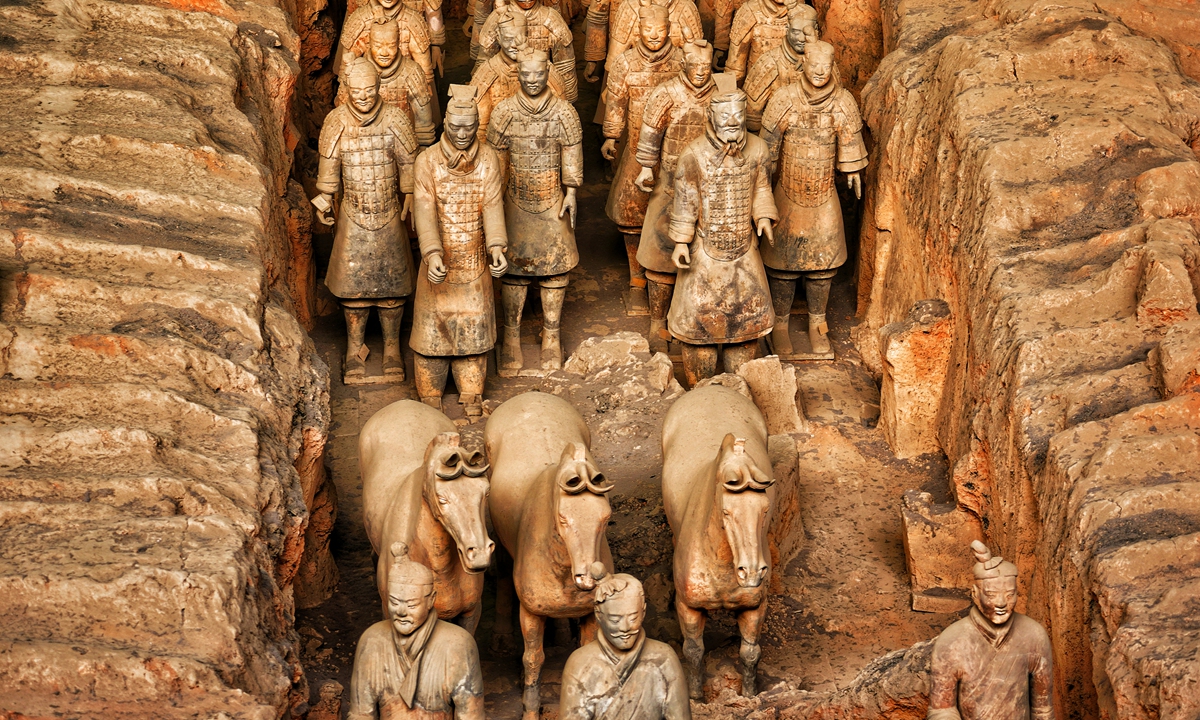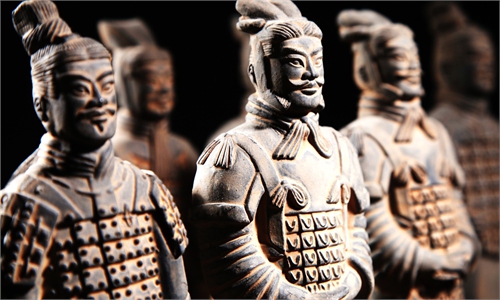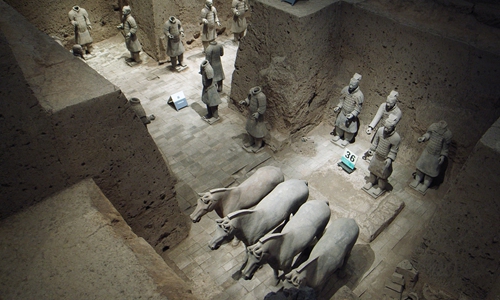ARTS / CULTURE & LEISURE
New findings unveil production process of Terracotta Warriors
Artisans used coiling techniques to create underground army

Terracotta Warriors Photo: VCG
Chinese experts announced that they have encoded more details about how the world famous Terracotta Warriors were made, according to a report by China Central Television on Sunday.Archaeologists from the Terracotta Warriors restoration team say that ancient artisans used the coiling method, which constructs objects by stacking and joining coils of clay on top of each other, to make the life-like statues, according to the National Cultural Heritage Administration.
"Artisans made the main body parts including the feet and legs of the warriors first. The head and the arms of the body were then made separately," Shen Maosheng, one of the scholars from the No.1 Pit excavation team at Emperor Qinshihuang's Mausoleum Site Museum, noted on Sunday.
Archaeologists further noted that a second layer of extremely exquisite fine mud would then be applied after the main body of the statue had air-dried. Artisans would then carve out the details of the warrior's armor and clothing from this second layer.
"When the main body was ready, the artisans would later attach the arms and head to it," noted Shen.
"We can see from the body to the vivid facial expressions. Those details give the Terracotta Warriors a real life-like aura, which shows the realism of ancient Chinese art," Li Yi, a Shanghai-based artist specializing in ancient art, told the Global Times on Monday.
Pit No.1 is the largest of the burial pits inside the Mausoleum of Emperor Qinshihuang, China's first emperor.
The pit is 230 meters long and 62 meters wide, or a total area of 14,260 square meters.
Three excavations have been carried out in the pit. The third excavation was carried out from 2009 to 2022 and covered an area of about 430 square meters. More than 220 terracotta figures, 16 terracotta horses, four chariots and other cultural relics such as weapons and production tools were discovered during the excavation.
Experts further noted that based on the excavations so far, it is expected that more than 6,000 pottery figurines and pottery horses will be found in total in the future.
According to the archaeological findings so far, experts note that not long after the burial pits were completed during the Qin Dynasty (221BC-206BC), most of Pit No.1 was looted and burned. The nearby Pit No.3 was also looted.
Experts note that, based on historical records, the pits were looted and destroyed by Xiang Yu, a noble of the Chu State who rebelled toward the end of the Qin Dynasty.
Repairing the broken terracotta statues has been a major challenge for archaeologists.
Lan Desheng, a restoration expert at the museum who has spent 26 years restoring the Terracotta Warriors, noted that the restoration team has repaired more than 130 statues so far.
"It normally takes two years to glue the broken pieces of those pottery figurines back together," said Lan.
Restoration is hard work and takes great expertise, patience and a little bit of luck as well.
"Sometimes we needed a missing part and it took three or even four years before we found that part in the pit and so could begin the restoration process."


